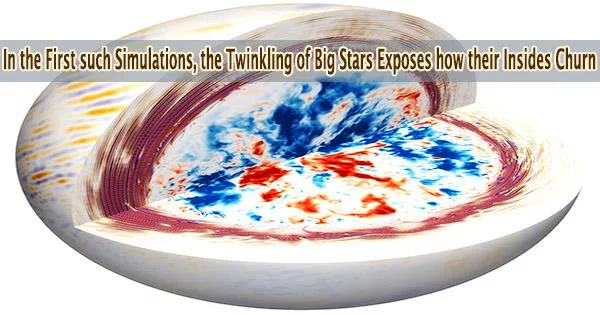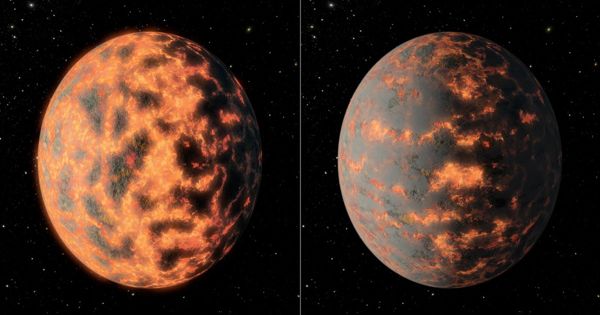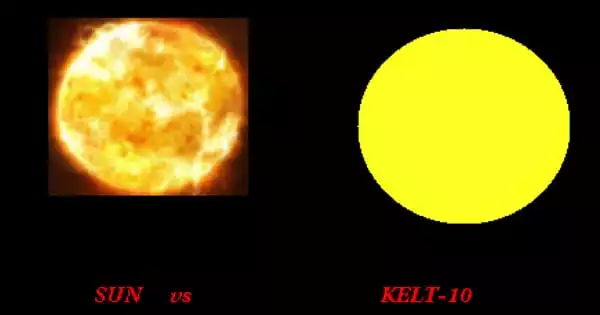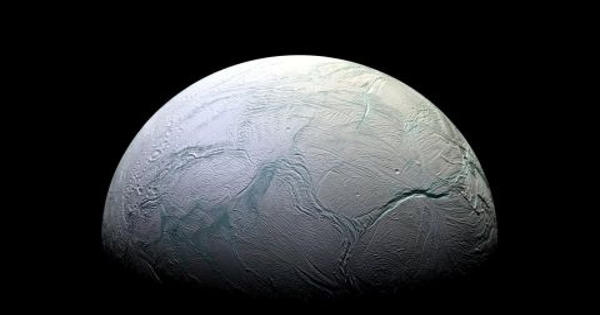In the blinking of stars, secrets are hidden. A research team led by experts at the Flatiron Institute and Northwestern University has produced first-of-their’s-kind computer simulations illustrating how churning in a star’s depths might cause the star’s light to flicker. This effect is distinct from the observable star-twinkling in the night sky brought on by the atmosphere of Earth.
Astronomers could one day use the models to understand more about what occurs within stars bigger than our sun by closely studying the natural twinkling of stars, the researchers report on July 27, 2023 in Nature Astronomy.
The effects are too small for current telescopes to pick up, says study co-author Matteo Cantiello, a research scientist at the Flatiron Institute’s Center for Computational Astrophysics (CCA) in New York City. That could change with improved telescopes.
“We’ll be able to see the signature of the core,” Cantiello says, “which will be quite interesting because it will be a way to probe the very inner regions of stars.”
Evan Anders, a postdoctoral researcher at Northwestern University and the study’s lead author, claims that a greater comprehension of stellar interiors will aid astronomers in learning about the formation and evolution of stars, the formation of galaxies, and the formation of heavy elements like the oxygen we breathe.
“Motions in the cores of stars launch waves like those on the ocean,” Anders says. “When the waves arrive at the star’s surface, they make it twinkle in a way that astronomers may be able to observe. For the first time, we have developed computer models which allow us to determine how much a star should twinkle as a result of these waves. This work allows future space telescopes to probe the central regions where stars forge the elements we depend upon to live and breathe.”
Intriguingly, the new simulations also widen a years-long stellar mystery. The brightness of hot, massive stars has been shown to fluctuate due to an inexplicable pulsing or “red noise” that astronomers have often noticed.
Convection in the cores of the stars was once thought to be the cause of this flashing. The twinkling caused by core convection, however, is far too faint, according to the new models, to match the red noise that has been detected. Something else must be responsible, the researchers report in their new paper.
Simulating the wave generation and propagation in a computer is absurdly difficult, though. That’s because while a wave-generating flow in the star’s core lasts a few weeks, the waves generated can linger for hundreds of thousands of years. Connecting those drastically different timescales weeks and hundreds of millennia posed a serious challenge.
Matteo Cantiello
A deep squeeze
A star’s convection is powered by the nuclear reactor at its core. Under the extreme pressure found in a star’s core, hydrogen atoms are forced together to create helium atoms along with some extra energy. Heat is produced by that energy, and heat causes clumps of plasma to rise like the lava lamp goo.
But unlike a lava lamp, the convection is turbulent like a pot of boiling water. Similar to the waves produced by the oceans on Earth, this movement produces waves. The star’s light brightens and dims as a result of these waves as they propagate outward to the star’s surface and compress and decompress the star’s plasma. Scientists came to the conclusion that they might be able to learn anything about the inner workings of a star by examining its brightness.
“Simulating the wave generation and propagation in a computer is absurdly difficult, though,” Cantiello says. “That’s because while a wave-generating flow in the star’s core lasts a few weeks, the waves generated can linger for hundreds of thousands of years. Connecting those drastically different timescales weeks and hundreds of millennia posed a serious challenge.”
The sound waves that make up music were a new type of wave that the researchers were inspired by. They came to understand that the convection-induced wave creation in the core is comparable to a band playing in an auditorium. The sound of the performers strumming their instruments is altered as it reverberates across the space.
The researchers discovered they could simulate the acoustic characteristics of the star by first calculating the unaltered “song” of the convection-induced waves, much like a professional sound engineer would do.
The researchers tested their method using sound waves from real music, including “Jupiter” from Gustav Holst’s orchestral suite “The Planets” and, rather appropriately, “Twinkle, Twinkle, Little Star.” They simulated how those sound waves would bounce around inside stars of different sizes, producing a haunting result.
The researchers next used computer simulations to model the convection-induced waves and subsequent brightness fluctuations of stars with masses of three, fifteen, and forty times that of the sun. The core convection did, in fact, produce flickering light at the surface for all three sizes, but not at frequencies or intensities resembling the red noise previously observed by astronomers.
“Convection may still be responsible for red noise,” Cantiello says, “but it would likely be far nearer to the star’s surface and therefore less telling of what’s going on in the star’s deep interior.”
The scientists are currently enhancing their models to take into account additional impacts, such as the star rapidly spinning around its axis, which is a frequent characteristic of stars more massive than our sun. They want to know if the core convection-induced flickering in fast-spinning stars is intense enough to be detected by modern telescopes.
“It’s an interesting question we’re hoping to get an answer to,” Cantiello says.
















